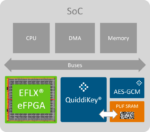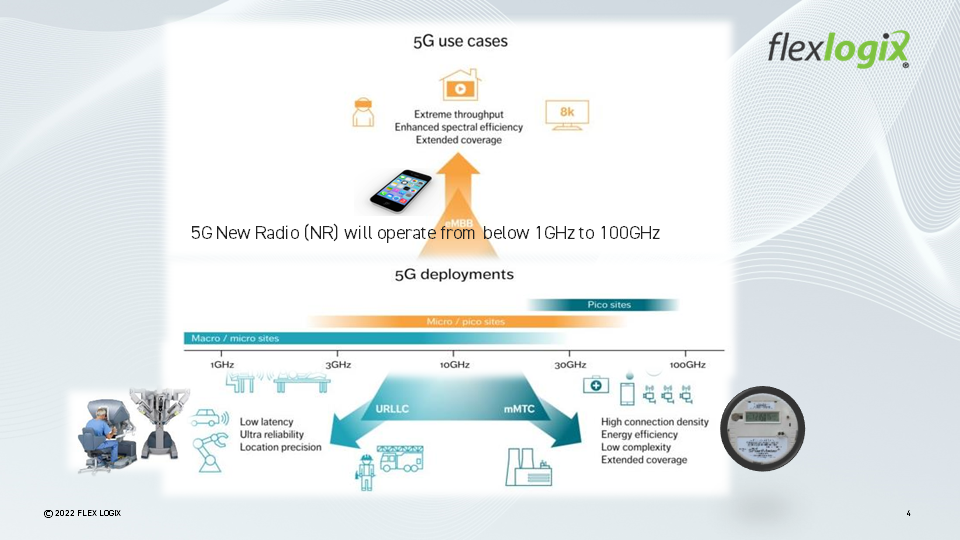While the ASIC market has always had its advantages over alternate solutions, it has faced boom and bust cycles typically driven by high NRE development costs and time to market lead times. During the same time, the FPGA market has been consistently bringing out more and more advanced products with each new generation. With very… Read More
EasyVision: A turnkey vision solution with AI built-in
Artificial intelligence (AI) is reserved for companies with hordes of data scientists, right? There’s plenty of big problems where heavy-duty AI fits. There’s also a space of smaller, well-explored problems where lighter AI can deliver rapid results. Flex Logix is taking that idea a step further, packaging their InferX X1 edge… Read More
WEBINAR: 5G is moving to a new and Open Platform O-RAN or Open Radio Access Network
The demands of 5G requires new designs to not only save power but also increase performance and by moving to advance power-saving nodes and by using eFPGAs will help to achieve these goals. This paper will introduce 5G and O-RAN, the complexity of these systems, and how flexibility could be beneficial. Then we will dive into how eFPGA… Read More
Why Software Rules AI Success at the Edge
It is an unavoidable fact that machine learning (ML) hardware architectures are evolving rapidly. Initially most visible in datacenters (many hyperscalars have built their own AI chips), the trend is now red-hot in inference engines for the edge, each spinning new ground-breaking methods. Markets demand these advances to … Read More
High Efficiency Edge Vision Processing Based on Dynamically Reconfigurable TPU Technology
While many tough problems relating to computing have been solved over the years, vision processing is still challenging in many ways. Cheng Wang, Co-Founder and CTO of FlexLogix Technologies gave a talk on the topic of edge vision processing at Linley’s Spring 2022 conference. During that talk he references how Gerald Sussman… Read More
A Flexible and Efficient Edge-AI Solution Using InferX X1 and InferX SDK
The Linley Group held its Fall Processor Conference 2021 last week. There were several informative talks from various companies updating the audience on the latest research and development work happening in the industry. The presentations were categorized as per their focus, under eight different sessions. The sessions topics… Read More
Flex Logix and Socionext are Revolutionizing 5G Platform Design
The world is buzzing with 5G deployment news. It seems the entire planet anxiously awaits the step function improvement in bandwidth and latency promised by this new technology. When there is additional deployment, it’s news. When there are new chipsets and devices supporting the standard it’s news. But when there is a fundamental… Read More
Using eFPGA to Dynamically Adapt to Changing Workloads
In early April, Gabriele Saucier kicked off Design & Reuse’s IPSoC Silicon Valley 2021 Conference. IPSoC conference as the name suggests is dedicated to semiconductor intellectual property (IP) and IP-based electronic systems. There were a number of excellent presentations at the conference. The presentations had been… Read More
Flex Logix Closes $55M in Series D Financing and Accelerates AI Inference and eFPGA Adoption
Flex Logix is a unique company. It is one of the few that supplies both FPGA and embedded FPGA technology based on a proprietary programmable interconnect that uses half the transistors and half the metal layers of traditional FPGA interconnect. Their architecture provides some rather significant advantages. I wrote about their… Read More
Flex Logix Expands Its eFPGA Footprint with a Low Power Comms Design Win from OpenFive
Embedded FPGA use is on the rise. The programmability offered by this kind of IP finds many applications in complex SoCs. There was a recent announcement that OpenFive had licensed Flex Logix’s eFPGA to develop a low power communications SoC. The part required a large eFPGA. The news was reported on SemiWiki here. This announcement… Read More











